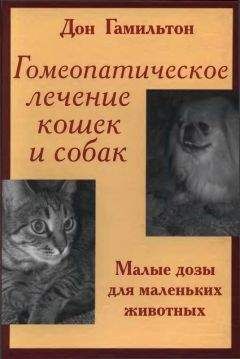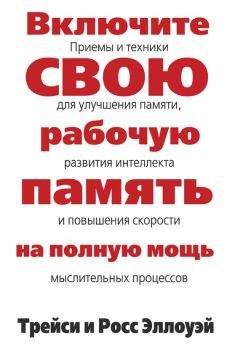Питер Уорд - Новая история происхождения жизни на Земле
132
J. Valentine, «How Many Marine Invertebrate Fossils?» Journal of Paleontology 44 (1970): 410–15: N. Newell, «Adequacy of die Fossil Record,» Journal of Paleontology 33 (1959): 488–99.
133
D. M. Raup, «Taxonomic Diversity During the Phanerozoic,» Science 177 (1972): 1065–71; D. Raup, «Species Diversity in the Phanerozoic: An Interpretation,» Paleobiology 2 (1976): 289–97.
134
J. J. Sepkoski, Jr., «Ten Years in the Library: New Data Confirm Paleontological Patterns,» Paleobiology 19 (1993): 246–57; J. J. Sepkoski, Jr., «A Compendium of Fossil Marine Animal Genera,» Bulletins of American Paleontology 363: 1–560.
135
J. Alroy et al., «Effects of Sampling Standardization on Estimates of Phanerozoic Marine Diversification,» Proceedings of the National Academy of Sciences 98 (2001): 6261–66.
136
J. Sepkoski, «Alpha, Beta, or Gamma; Where Does All the Diversity Go?» Paleobiology 14 (1988): 221–34.
137
J. Alroy et al., «Phanerozoic Diversity Trends,» Science 321 (2008); 97.
138
A. B. Smith, «Large-Scale Heterogeneity of the Fossil Record: Implications for Phanerozoic Biodiversity Studies,» Philosophical Transactions of the Royal Society of London 356, no. 1407 (2001): 351–67; A. B. Smith, «Phanerozoic Marine Diversity: Problems and Prospects,» Journal of the Geological Society, London 164 (2007): 731–45: A. B. Smith and A. J. McGowan, «Cyclicity in the Fossil Record Mirrors Rock Outcrop Area,» Biology Letters 1, no. 4 (2005): 443–45; A. B. Smith, «The Shape of the Marine Paleodiversity Curve Using the Phanerozoic Sedimentary Rock Record of Western Europe,» Paleontology 50 (2007): 765–74; A. McGowan and A. Smith «Are Global Phanerozoic Marine Diversity Curves Truly Global? A Study of the Relationship between Regional Rock Records and Global Phanerozoic Marine Diversity,» Paleobiology, 34, no. 1 (2008): 80–103.
139
M. J. Benton and B. C. Emerson, «How Did Life Become So Diverse? The Dynamics of Diversification According to die Fossil Record and Molecular Phylogenetics,» Paleontology 50 (2007): 23–40.
140
S. E. Peters, «Geological Constraints on the Macroevolutionary History of Marine Animals,» Proceedings of the National Academy of Sciences 102 (2005): 12 326-31.
141
Это один из наших любимых моментов в палеонтологии, к которому можно применить фразу «А король-то голый». Команда исследователей из Института Канзаса выдвинула гипотезу, что события в ордовике могли быть вызваны гамма-излучением из глубокого космоса. Подобные случаи действительно существуют, огромное количество энергии рождается из малых звезд, полных энергии, подобно пульсарам и магнитарам из далеких от нас областей галактики. Но довольно странным кажется предположение, что подобная энергетическая вспышка (гамма-всплеск) могла «поджечь» Землю, вызвав при этом ордовикское массовое вымирание. С таким же успехом виновниками данного события можно считать вулканы или, скажем, разозленного Дарта Вейдера (впрочем, было ли у бедняги Вейдера хоть какое-то другое настроение?). A. L. Melott and B. C. Thomas, «Late Ordovician Geographic Patterns of Extinction Compared with Simulations of Astrophysical Ionizing Radiation Damage,» Paleobiology 35 (2009): 311–20. См. также www.nasa.gov-vision-universe-starsgalaxies-gammaray_extinction.html.
142
R. K. Bambach et al., «Origination, Extinction, and Mass Depletions of Marine Diversity,» Paleobiology 30, no. 4 (2004): 522–42.
143
S. A. Young et al., «A Major Drop in Seawater 87Sr-86Sr during the Middle Ordovician (Daniwilian): Links to Volcanism and Climate?» Geology 37, 10 (2009): 951–54.
144
S. Finnegan et al., «The Magnitude and Duration of Late Ordovician-Early Silurian Glaciation,» Science 331, no, 6019 (2011): 903–906.
145
S. Finnegan et al., «Climate Change and the Selective Signature of the Late Ordovician Mass Extinction,» Proceedings of the National Academy of Sciences 109, no. 18 (201a): 6829–34.
146
Кратко о ранних четвероногих организмах, а также о процессе их эволюции можно прочитать на сайте: www.devoniantimes.org-opportunity-tetrapodsAnswer.html, или обратиться к следующему источнику: S. E. Pierce et al., «Three-Dimensional Limb Joint Mobility in the Early Tetrapod» Ichthyostega Nature 486 (2012): 524–27, and P. E. Ahlberg et al., «The Axial Skeleton of the Devonian Tetrapod» Ichthyostega Nature 437, no. 1 (2005): 137–40.
147
J. A. Clack, Gaining Ground: The Origin and Early Evolution of Tetrapods, 2nd ed. (Bloomington: Indiana University Press, 2012).
148
E. B. Daeschler et al., «A Devonian Tetrapod-Like Fish and the Evolution of the Tetrapod Body Plan,» Nature 440, no. 7085 (2006): 757–63; J. P. Downs et al., «The Cranial Endoskeleton of Tiktaalik roseae,» Nature 455 (2008): 925–29. Выводы: P. E. Ahlberg and J. A. Clack, «A Firm Step from Water to Land,» Nature 440 (2006): 747–49.
149
N. Shubin, Your Inner Fish: A Journey into the 3.5-Billion-Year History of the Human Body (Chicago: University of Chicago Press, 2008); B. Holmes, «Meet Your Ancestor, the Fish That Crawled,» New Scientist, September 9, 2006.
150
A. K. Behrensmeyer et al., eds., Terrestrial Ecosystems Through Time: Evolutionary Paleoecology of Terrestrial Plants and Animals (Chicago and London: University of Chicago Press, 1992); P. Kenrick and P. R. Crane, The Origin and Early Diversification of Land Plants. A Cladistic Study (Washington: Smithsonian Institution Press, 1997).
151
S. B. Hedges, «Molecular Evidence for Early Colonization of Land by Fungi and Plants,» Science 293 (2001): 1129–33.
152
C. V. Rubenstein et al., «Early Middle Ordovician Evidence for Land Plants in Argentina (Eastern Gondwana),» New Phytologist 188, no. 2 (2010): 365–69. С докладом на данную тему можно ознакомиться здесь: www.dailymail.co.uk-sciencetech-article-1319904-Fossils-worlds-oldest-plants-unearthed-Argentina.html.
153
J. T. Clarke et al., «Establishing a Time-Scale for Plant Evolution,» New Phytologist 192, no. 1 (2011): 266–30; M. E. Kotyk et al., «Morphologically Complex Plant Macrofossils from the Late Silurian of Arctic Canada,» American Journal of Botany 89 (2002): 1004–13.
154
Наша работа о распространении насекомых и позвоночных упоминается в следующем источнике: P. Ward et al., «Confirmation of Romer’s Gap as a Low Oxygen Interval Constraining the Timing of Initial Arthropod and Vertebrate Terrestrialization,» Proceedings of the National Academy of Sciences 10, no. 45 (2006): 16 818-22.
155
R. Dudley, «Atmospheric Oxygen, Giant Paleozoic Insects and the Evolution of Aerial Locomotor Performance,» The Journal of Experimental Biology 201 (1988): 1043–50; R. Dudley, The Biomechanics of Insect Flight: Form, Function, Evolution (Princeton: Princeton University Press, 2000); R. Dudley and P. Chai, «Animal Flight Mechanics in Physically Variable Gas Mixtures,» The Journal of Experimental Biology 199 (1996): 1881–85. Также C. Gans et al., «Late Paleozoic Atmospheres and Biotic Evolution,» Historical Biology 13 (1991): 199–219; J. Graham et al., «Implications of the Late Paleozoic Oxygen Pulse for Physiology and Evolution,» Nature 375 (1995): 117–20; J. F. Harrison et al., «Atmospheric-Oxygen Level and the Evolution of Insect Body Size,» Proceedings of the Royal Society B-Biological Sciences 277 (2010): 1937–46.
156
D. Flouday et al., «The Paleozoic Origin of Enzymatic Lignin Decomposition Reconstructed from 31 Fungal Genomes,» Science 336, no. 6089 (2012): 1715-19.
157
Там же.
158
J. A. Raven, «Plant Responses to High O, Concentrations: Relevance to Previous High O., Episodes,» Global and Planetary Change 97 (1991): 19–38; and J. A. Raven et al., «The Influence of Natural and Experimental High O2 Concentrations on O2-EvoKing Phototrophs,» Biological Reviews 69 (1994): 61–94 2.
159
J. S. Clark et al., Sediment Records of Biomass Burning and Global Change (Berlin: Springer-Verlag, 1997); M. J. Cope et al., «Fossil Charcoals as Evidence of Past Atmospheric Composition,» Nature 283 (1980): 647–49; C. M. Belcher et al., «Baseline Intrinsic Flammability of Earth’s Ecosystems Estimated from Paleoatmospheric Oxygen over the Past 350 Million Years,» Proceedings of the National Academy of Sciences 107, no. 52 (2010): 22 448-53. Мы считаем, что главный недостаток этих экспериментов в том, что их результаты не подтвердятся при высоких температурах горения. Даже при малом количестве кислорода обычный удар молнии образует гораздо большую температуру, чем та, которую использовали в данном исследовании.
160
D. Beerling, The Emerald Planet: How Plants Changed Earth's History (New York: Oxford University Press, 2007).
161
Q. Cai et al., «The Genome Sequence of the Ground Tit Pseudopodoces kumilis Provides Insights into Its Adaptation to High Altitude,» Genome Biology 14, no. 3 (2013); www.geo.umass.edu-climate-quelccaya-diuca.html, а также P. Ward, Out of Thin Air: Dinosaurs, Birds, and Earth's Ancient Atmosphere (Washington, D.C.: Joseph Henry Press, 2006). В данных работах содержится информация о сооружении гнезд на больших высотах.
162
P. Ward, Out of Thin Air.
163
M. Laurin and R. R. Reisz, «A Reevaluation of Early Amniote Phytogeny,» Zoological Journal of the Linnean Society 113, no. 2 (1995): 165–223.
164
P. Ward, Out of Thin Air.
165
C. Sidor et al., «Permian Tetrapods from the Sahara Show Climate-Controlled Endemism in Pangaea,» Nature 434 (2012): 886–89; S. Sahney and M. J. Benton, «Recovery from the Most Profound Mass Extinction of All Time,» Proceedings of the Royal Society, Series B 275 (2008): 759–65.
166
Окаменелости беспозвоночных животных в округе Мэйшань являются самыми хорошо изученными свидетельствами того ужасного события. Данный вопрос хорошо исследован здесь: S.-Z. Shen et al., «Calibrating the End-Penman Mass Extinction,» Science 334, no. 6061 (2011): 1367–72; Y. G. Jin et al., «Pattern of Marine Mass Extinction Near the Permian-Triassic Boundary in South China,» Science 289, no. 5478 (2000): 432–36.
167
C. R. Marshall, «Confidence Limits in Stratigraphy,» in D. E. G. Briggs and P. R. Crowther, eds., Paleobiology II (Oxford: Blackwell Scientific, 2001), 542–45; Также новые работы наших коллег из Аделаиды: C. J. A. Bradshaw et al., «Robust Estimates of Extinction Time in the Geological Record,» Quaternary Science Reviews 33 (2011): 14–19.




